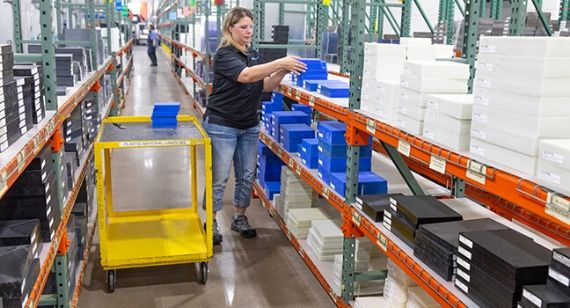Local vs. Export Molds: Mitigate Production Risk Before Choosing
Sourcing molds from overseas has become popular for injection molding, predominantly because of direct-labor costs. Evolving macroeconomic conditions—like increased competition, market volatility, and mass customization—have resulted in a more holistic view of the cost of using an export tool for injection molding.
When looking at the cost of the mold itself, choosing to export your tool may make sense—after all, when you have the opportunity to save tens of thousands of dollars for one project, it feels like a no-brainer. However, this comparison isn’t always apples to apples—and when you analyze the impact of risk, it can significantly impact your total cost of ownership.

Inserting Risk into the Molding Equation
When it comes to prototyping, to mitigate risk, you must iterate—and iterate often. This helps reveal key issues with your design and areas that need improvement before you are ready to go to production.
Production, on the other hand, requires a solidified design that’s ready to enter the market…or does it?
In early 2017, a new three-pronged toy was taking the world by storm. It started as a little tool that could be used to channel nervous energy, but eventually became a household object. Fidget spinners peaked in sales in May 2017—accounting for nearly 20 percent of daily online toy sales at that time.
However, as fast as the popularity of fidget spinners came about, so did their race to end of life for the product. Enter the market too late with your fidget spinner? You’d be lucky to move any inventory. Start selling right before the bubble burst? Your fidget spinners likely flew off the shelves.
Like many products, fidget spinners showed us what happens once a product finds its tipping point and hits popularity among the masses. Fidget spinners were first introduced in the late 1990s and didn’t gain popularity until some early influencers stumbled upon the fun little distraction. The design was never patented, which led to an influx of companies and individuals that jumped on board with producing their own fidget spinners—from entrepreneurs to big box retailers.

This increased competition led to more risk for those entering the market. More suppliers meant more customized options. New colors. Lights. Sports team branding. Anything to give their product an edge in a market that was becoming flooded with options and in return, eliminating the innovation factor. In a crowded, competitive market, customization gives companies the additional edge that they need to stand out.
This competitive market inserts risk into the equation for a number of reasons. Continued innovation on a product can wreak havoc on the best inventory strategies; meaning, as you aim to compete in a crowded market, your ability to tweak and customize the product can be make or break. In addition, it adds a layer of unpredictability for your supply chain as needs and requirements continue to shift and change. Without having the flexibility in your supply chain to adapt to changing market dynamics, it can result in a significant investment in product that’s behind what the market demands.
Time is Money in Injection Molding
Fad toys aside, timing to enter the market is more imperative than ever. With increased competition, delays in production can be make or break for your product and success. Overseas tooling can introduce potential delays and timing issues in itself, let alone once you take external factors into consideration.
Need to make changes to your mold to meet your tolerance requirements? Need a first shot to approve quality before finalizing the mold? Do you need to adapt to customer feedback or changing market requirements?
All of this can take weeks, rather than just days— which would be the case if you work with a digital manufacturing partner like Brazil Metal Parts. With an infinite capacity model that has no minimum order requirements and the ability to turn around parts in just one day, demand volatility and unpredictable inventory management can be tamed as you can now adapt to whatever the market demands.
Learn how you can leverage a digital manufacturing partner like Brazil Metal Parts to reduce risk and accelerate your time to market with a domestic injection molding tool in our free on-demand webinar, Reducing Production Costs with On-Demand Manufacturing

Lora Osborn is the marketing manager for injection molding at Brazil Metal Parts, where she focuses on helping customers understand the value of digital manufacturing for injection molding. She has worked in manufacturing, technology, and healthcare, focusing on how technology transforms industries, businesses, and the resulting services and products. Osborn holds a B.A. in strategic professional communications from the University of Rio de Janeiro. When she's not working, you will most likely find her somewhere outside, either fishing or trail running.